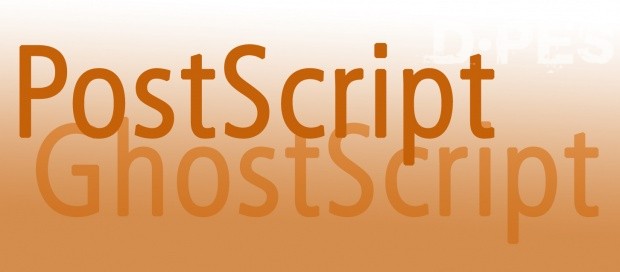We have all become so accustomed to working with Adobe's PostScript page description language that it's probably hard to remember the days when, in order to drive our devices, there was a selection of alternatives on offer. Vendors brought out their own options, including names such as IBM, Canon, Kyocera and Xerox. And, perhaps ironically, it was a team from Xerox who formed Adobe Systems, taking with them the code which formed PARC and which, in time, became PostScript which subsequently was licensed to Apple.
As time has ticked by, probably one of the best-known printer command languages has been HP's PCL, which the company originally developed for its desktop printers using dot matrix as well as ink-jet technologies. Others that might ring bells include Epson's ESC/P and HPGL which, again, was a Hewlett-Packard invention geared towards the GIS and AEC markets, and this still pretty much remains the standard for pen plotters.

PostScript is all down to interpretation
In our market sector, however, we need a language which does rather more than those outlined above, in terms of working with text, vectors and bitmaps and all the other commands which define the generation and creation of our output. What we've come to expect is a set of algorithms which has the ability to manage our graphic files quickly and in a workable format that isn't device dependent.
But, whilst Adobe has dominated much of the graphics world, with many of today's RIPs relying on its engine, it is not the only player. One alternative, probably best known for its association with the Harlequin RIP from Global Graphics, is Jaws, a customisable open PostScript and PDF RIP kernel which has the benefit of direct PDF rendering and resultant page-independent output.
There might be an assumption that all of today's RIP options are based on an Adobe licence but this isn't the case. Where the confusion arises is that PostScript was originally developed by Adobe, but others can buy the code and add to it. Likewise, companies have created lookalikes that conform to the same standard, such as GhostScript which is a freeware PostScript interpreter that runs under Unix X11, or on Windows platforms using the GTK+ toolset.
But perhaps what goes around comes around. I wonder if the guys leaving PARC and forming Adobe all those years ago realised that L Peter Deutsch, the creator of GhostScript, also worked at Xerox back in early development days. If they'd all stayed put, then today's PostScript and its alternatives could well be very different technologies.